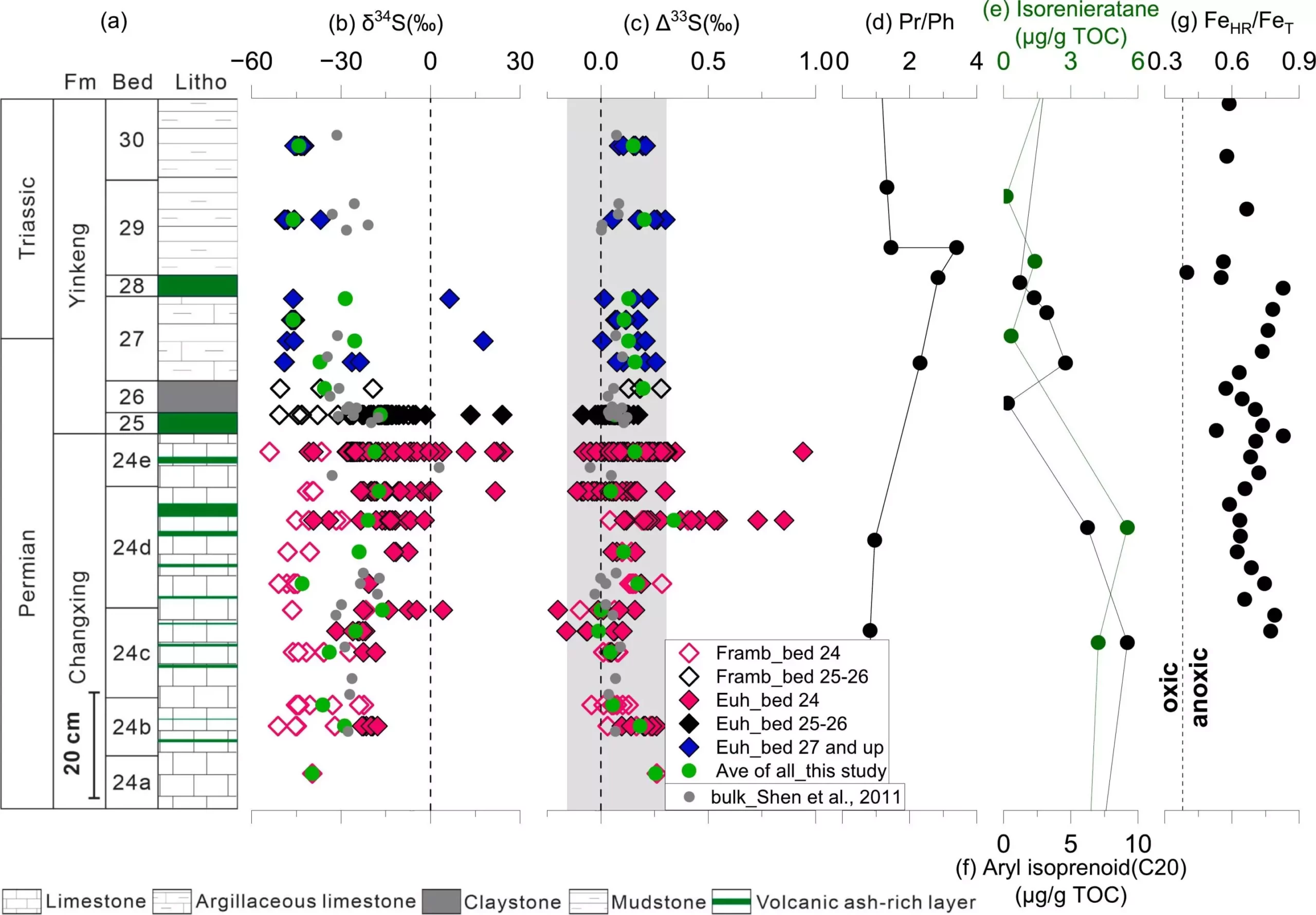The fascination with deadly mass extinctions that ravaged Earth’s ecosystems millions of years ago has captivated both the public and scientists for decades. In 1982, Jack Sepkoski and David Raup identified the “Big Five” extinction events in the planet’s geological history, with the end-Permian event being the largest and most devastating. During this catastrophic event, approximately 81% of all marine species and 70% of terrestrial vertebrate species went extinct. However, it was not only animals that were affected, as land plants also experienced significant mutations and destruction.
Unveiling the Trigger of the Mass Extinction
In a recent publication in Chemical Geology, a research team led by Dr. Rucao Li from Nanjing University, China, delved into the connection between volcanic eruptions, ozone layer damage, and the irreversible changes that ensued. The team focused on pyrite found in ash layers in the Meishan section of South China to measure sulfur isotopes and understand the impact of sulfur dioxide emissions on the stratospheric ozone layer. By using secondary ion mass spectrometry, the scientists detected three sulfur isotopes (sulfur-33, sulfur-34, and sulfur-36) in microscopic pyrite grains.
The Distinct Significance of Sulfur Isotopes
Analyzing the sulfur isotopes, the research team discovered a distinct positive change in Mass-Independent Fractionation sulfur isotopes (MIF-S) in a bed located just below the designated end-Permian bed. This change coincided with an increase in ash layers, suggesting a correlation between volcanic activity and ozone layer damage. However, in the bed designated as the Global Stratotype Section and Point (GSSP) of the Permian-Triassic Boundary, no significant MIF-S signal was found.
To understand the process by which volcanic emissions may have caused this catastrophic event, the researchers explored the photolysis of sulfur dioxide by ultraviolet radiation. When explosive volcanism disrupted the ozone layer and entered the stratosphere, there were fewer oxygen molecules to block incoming solar ultraviolet radiation. This led to the conversion of sulfur dioxide molecules to MIF-S sulfate aerosols, which were then transported from land to the oceans.
The Devastating Combination for Survival
The modeling supported the hypothesis that this volcanic activity caused a decrease in atmospheric oxygen. The sulfate-reducing bacteria in the ocean converted MIF-S-preserving molecules to hydrogen sulfide, resulting in the marine realm becoming both sulfidic and anoxic. This catastrophic combination had detrimental effects on terrestrial organisms exposed to high-intensity ultraviolet radiation on land and on oxygen-producers in the shallow photic zone of the sea. As oxygen supply declined, this impact filtered through the water column, leaving no escape from the damaging impacts of ozone destruction.
While the concerns over ozone depletion in recent decades may not reach the same devastating scale as the end-Permian mass extinction, they still have real consequences for our planet’s terrestrial and marine organisms, as well as humans. Understanding the link between volcanic eruptions, ozone depletion, and mass extinction events is crucial for scientists to develop strategies for mitigating the potential impact of future catastrophic events.
The research conducted by Dr. Rucao Li and his team sheds light on the connection between volcanic activity, ozone depletion, and the devastating end-Permian mass extinction. By analyzing sulfur isotopes in pyrite grains, they revealed a distinct positive change that suggests the damaging effects of volcanic emissions on the ozone layer. The process of photolysis and the subsequent conversion of sulfur dioxide to MIF-S sulfate aerosols played a significant role in the catastrophic combination of sulfidic and anoxic marine conditions. The implications of this research extend beyond the ancient past, reminding us of the real consequences of ozone depletion for our planet’s ecosystems and survival.


Leave a Reply